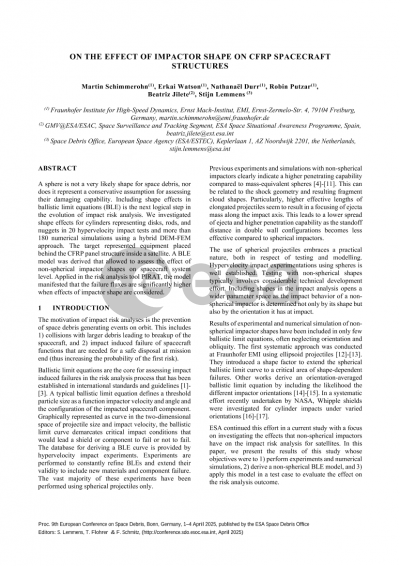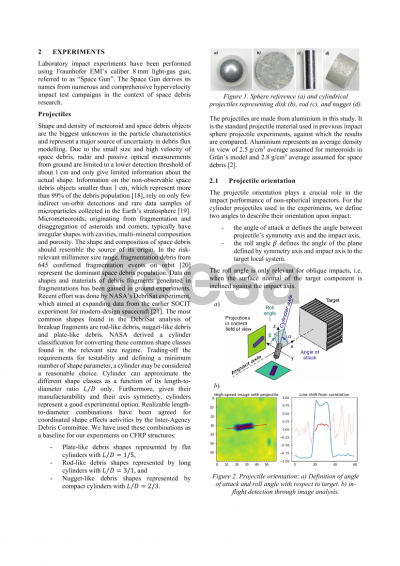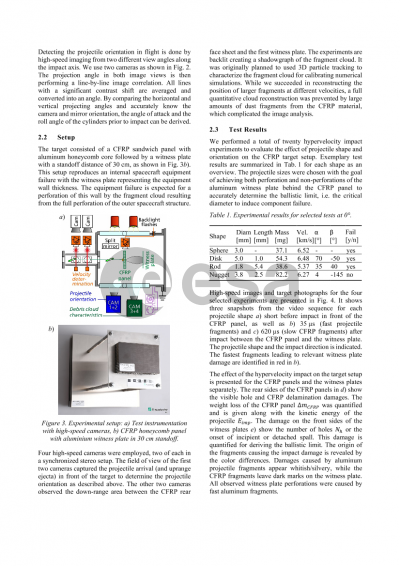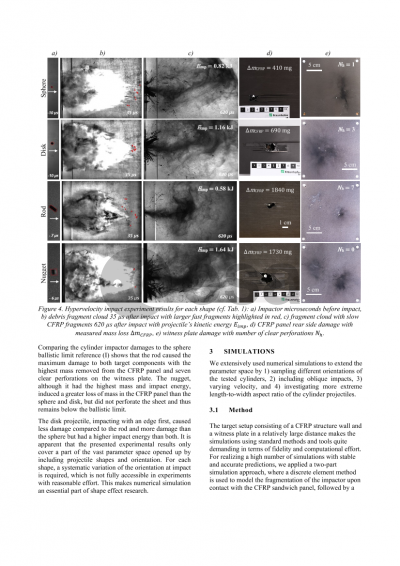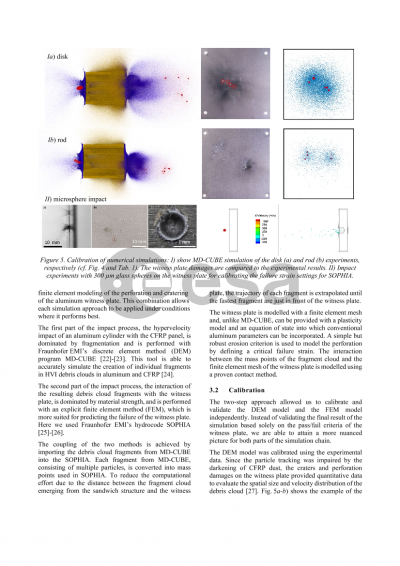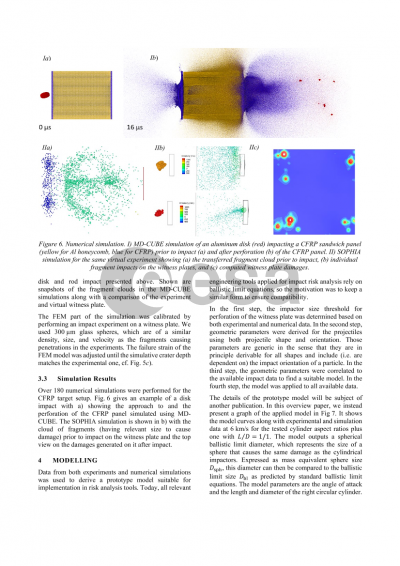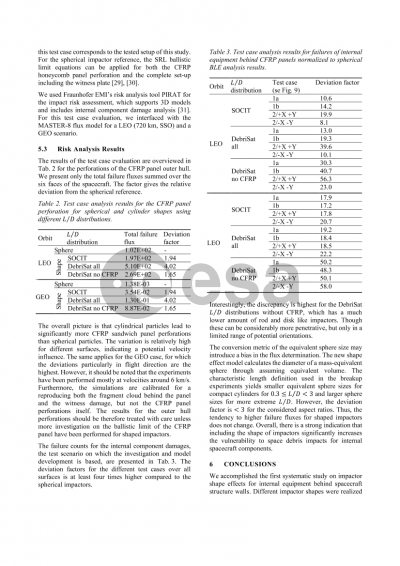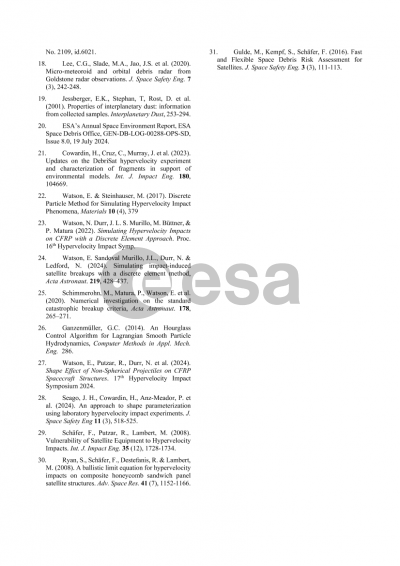Document details
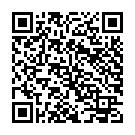
Abstract
The vast majority of hypervelocity impact experiments are performed using projectiles with spherical shapes only. The use of spherical projectiles embraces a practical nature and is well established. Testing with different projectile shapes typically involves considerable technical development effort and require including parameters of shape and impact orientation, thus widening the parameter space not only for testing, but also for modeling. In general, spherical projectiles have been accepted as a reasonable, conservative modeling approach, which averages shape and orientation. However, experimental and numerical simulations using non-spherical projectiles have shown that the projectile shape may considerably affect its penetrative capability. Including shape effects in spacecraft shield testing is the next logical step in the evolution of impact risk analysis. A better understanding of how the shape of an impactor influences its damaging potential is important for managing the risk and for defining mitigation measures for sustainable and safe space operations.
In this paper, we report the results of an ESA funded study whose objective was to investigate the effects a non-spherical impactor on the impact risk analysis for satellites. The target configuration is a setup representing equipment placed behind a representative CFRP honeycomb structure inside the satellite. Different impactor shapes were realized by varying the length-to-diameter (L/D) ratio of aluminum right cylinders to represent disks (L/D=1/5), nuggets (L/D=2/3), and rods (L/D=3). The masses of the projectile were chosen to be approximately equal to that of a 3 mm sphere. This allows to compare the perforation capability of the different shapes to the spherical reference that is represented by well-established ballistic limit equation used for risk analysis.
Including shapes in the impact analysis opens up a wide parameter space as the impact behavior of a non-spherical impactor is determined by the orientation it has during impact. For this reason, the analysis is based on numerical simulations that are validated by experiments. We present the results of 20 experiments performed at Fraunhofer EMI in the range of 5 to 7 km/s with various projectile orientations. Target orientation was 0° normal (12 tests) and 45° oblique (4 tests) to the impact direction. We evaluate the experimental results based on high-speed images, as well as perforation and damage inflicted on the witness plate. The experiments are extended with a hybrid discrete-element (DEM) finite-element (FEM) simulation approach. The modeling of the hypervelocity fragmentation is performed with DEM, while the modeling of material failure and crater formation is performed with FEM. This combination allows each simulation approach to be applied under conditions where it performs best.
Analysis of the experimental data manifested that the shape and orientation of the impactor does indeed play a very important role in determining perforation of a spacecraft shield or structure. General damage and perforation trends related to shape and orientation are investigated and discussed, particularly focusing on predicting shield performance with respect to spherical impactors. The paper ends with a discussion and outlook on how to model the influence of shape effects with current risk assessment methodologies.
Preview
